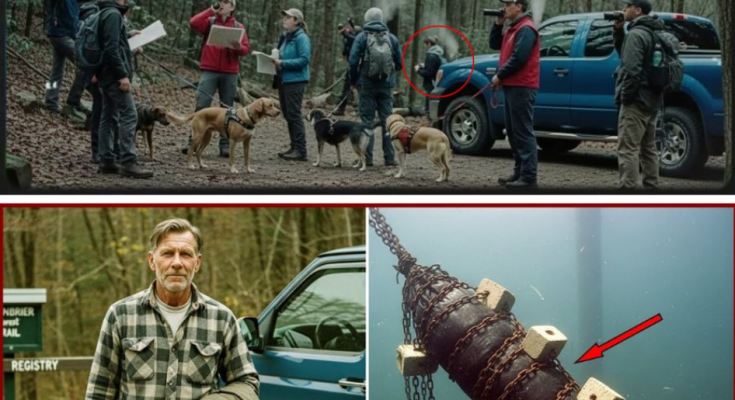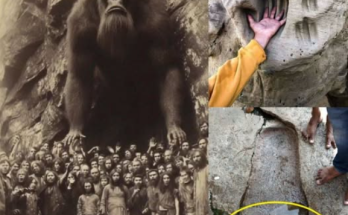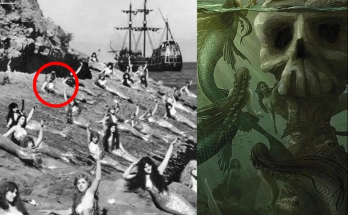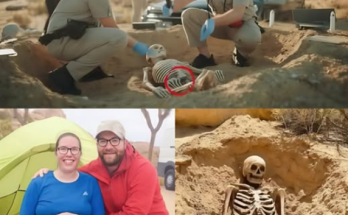A Secret Submerged for 7 Years: The West Virginia Cold Case That Defied Logic

In the sprawling, rugged landscape of West Virginia, where mountains hold secrets as deep as the coal seams beneath them, some mysteries are so profound they become part of the local folklore. For seven years, the disappearance of Richard Hail was one of those stories, a tale of a man who walked into the wilderness on a crisp autumn morning and simply vanished. The mountains were a silent accomplice, but the truth, as it turned out, wasn’t hidden in the woods at all—it was buried beneath the dark, still waters of a place nobody thought to look.
The story begins on September 24, 2016, a day that started like any other for Richard Hail, a 58-year-old retired coal miner from Marrow Creek. He told his wife, Margaret, he was going for a hike. His blue Ford pickup was found later that evening at the Greenbrier Forest Trail, the keys still in the ignition. A search party was launched immediately, their efforts guided by the last known coordinates from Richard’s satellite tracking device. Ping after ping, the device showed him heading deeper into the Silver Church Mountains, a remote, unforgiving area 40 miles from any populated town. Then, at 2:17 p.m., the signals stopped. The man who had spent his life within a 20-mile radius of home had disappeared without a trace, leaving behind only a digital trail that led to nothing but empty forest.
The Greenbrier County Sheriff’s Department sprang into action, activating their standard missing person protocol. By the next morning, search and rescue teams, K-9 units, and helicopters with thermal imaging cameras were combing a 15-square-mile grid. Hundreds of volunteers from Marrow Creek and neighboring towns joined the effort, their voices echoing through the valleys as they called his name. But the search yielded nothing. No abandoned backpack, no torn clothing, no sign of the man who had signed the trail registry just over 30 hours earlier. The GPS data had been a beacon, a lifeline directing every effort, but it led to a dead end.
What truly baffled investigators was Richard’s uncharacteristic behavior in the months leading up to his disappearance. The man was a creature of habit—coffee at 6 a.m., local news at 7 p.m., bed by 10. His idea of adventure was a Saturday morning drive to the county hardware store. Yet, he had started buying outdoor gear: professional-grade headlamps, water filtration tablets, heavy-duty hiking boots. He was seen at the local library, checking out topographical maps and wilderness survival books. Most unusual of all, he’d begun taking solitary trips into the surrounding forests, sometimes returning well after dark with no explanation.
Margaret Hail told investigators that her husband had grown increasingly withdrawn since their son Daniel’s legal troubles and imprisonment several years prior. The family had endured financial hardship and social isolation. “He changed after Daniel went away,” Margaret recalled. “He’d sit on the porch for hours just staring at the mountains. When I asked what he was thinking about, he’d say he was trying to figure something out, but he never told me what.”
As days turned to weeks, and weeks into months, the active search was scaled back. The investigation remained open, but with no new leads, it stalled. Richard Hail’s case joined the growing file of unsolved missing person cases in West Virginia. The mountains had claimed another soul, and the reasons would remain locked away with the secrets of the forest. The years that followed settled over the Hail household like a heavy fog. Margaret maintained her routines, but the silence in their small home grew deeper with each passing season. She kept Richard’s coffee mug in the kitchen cabinet and his boots by the back door, a small, stubborn act of hope.
The truth finally surfaced seven years later, in the spring of 2023, during a routine environmental cleanup at what locals called the “dead zone,” a collection of abandoned industrial sites. Dr. Linda Roberts, a lead hydrologist with Appalachian Environmental Solutions, was assessing a flooded excavation pit known as Sump Number Three. Her sonar equipment detected something that didn’t belong—a roughly human-sized object with a strong metallic signature. The object was too deep for a visual inspection, so Roberts deployed a remotely operated vehicle (ROV). What the camera feed revealed made her breath catch in her throat.
A human form, or what had once been human, lay at the bottom, wrapped in heavy chains and wired to concrete blocks. It was an unmistakable scene of intentional concealment, a deliberate act to ensure the body would never be found. The recovery operation took most of the following day, as police divers carefully documented the scene in near-zero visibility. The body, remarkably preserved by the cold, low-oxygen water, belonged to an older male wearing hiking gear consistent with what Richard Hail had been wearing on the day he vanished. The medical examiner, Linda Vasquez, noted evidence of blunt force trauma to the skull, a detail that transformed the case from a missing person inquiry to a homicide investigation.
But it was a discovery made by crime scene technician Maria Santos that would electrify the investigation. While examining the victim’s deteriorated hiking boots, she found something unusual in the left shoe—a small, cleverly constructed cavity carved into the heel. Inside, sealed in multiple layers of heavy-duty plastic and a commercial waterproof pouch, was a micro SD card. The device, no bigger than a fingernail, was the first piece of tangible evidence recovered from the scene. Its immaculate protection suggested someone had desperately wanted to hide its contents, knowing it might remain underwater for an extended period.
The discovery immediately reignited the cold case. Detective Ray Collins of the West Virginia State Police cross-referenced the preliminary forensic details against the missing person’s database. The victim profile was a perfect match for Richard Allen Hail. Collins called Margaret Hail, delivering the news that her seven-year wait might finally be over. The conversation was brief, but the weight of years of uncertainty was palpable in her voice.
As the investigation expanded, a profound and disturbing detail emerged. According to the original case file, Richard’s satellite tracking device had placed him 40 miles away from where his body was recovered. The GPS data, which had been the foundation of a massive, multi-agency search effort, was now completely irrelevant. The implications were staggering: hundreds of volunteers, K-9 units, and professional search teams had been searching the wrong area for weeks.
Investigators were left with two possibilities. The first, an unprecedented technical malfunction, was quickly ruled out by tech specialists from the device’s manufacturer. The second, and far more sinister, was that the GPS data had been intentionally manipulated—a process known as “spoofing.” Someone with specialized equipment and technical knowledge had created a false trail, broadcasting fake signals to Richard’s device to lead searchers on a wild goose chase. This wasn’t a random crime; it was a meticulously planned conspiracy.
The case was no longer just about a missing man; it was about a killer who had gone to extraordinary lengths to bury their crime. Why would a murderer go to such elaborate trouble? Why not simply destroy the tracking device? The questions multiplied, and the 40-mile discrepancy loomed over every aspect of the inquiry. Meanwhile, forensic accountants began tracing Richard’s financial records, and phone records were subpoenaed. The investigation had expanded beyond a simple homicide into something that resembled a conspiracy case.
The most promising lead remained the micro SD card. Digital forensics specialists in Charleston were attempting the delicate process of extracting data that had survived seven years underwater. If the card contained photos, documents, or any other information that Richard had felt was important enough to hide so carefully, it might finally explain why someone had been willing to kill him and go to such elaborate lengths to cover it up. The dark waters of Sump Number Three had given up their secret, but the full story of what happened to Richard Hail was only just beginning to unfold. The race was on to uncover the truth before the case went cold again, for good.



